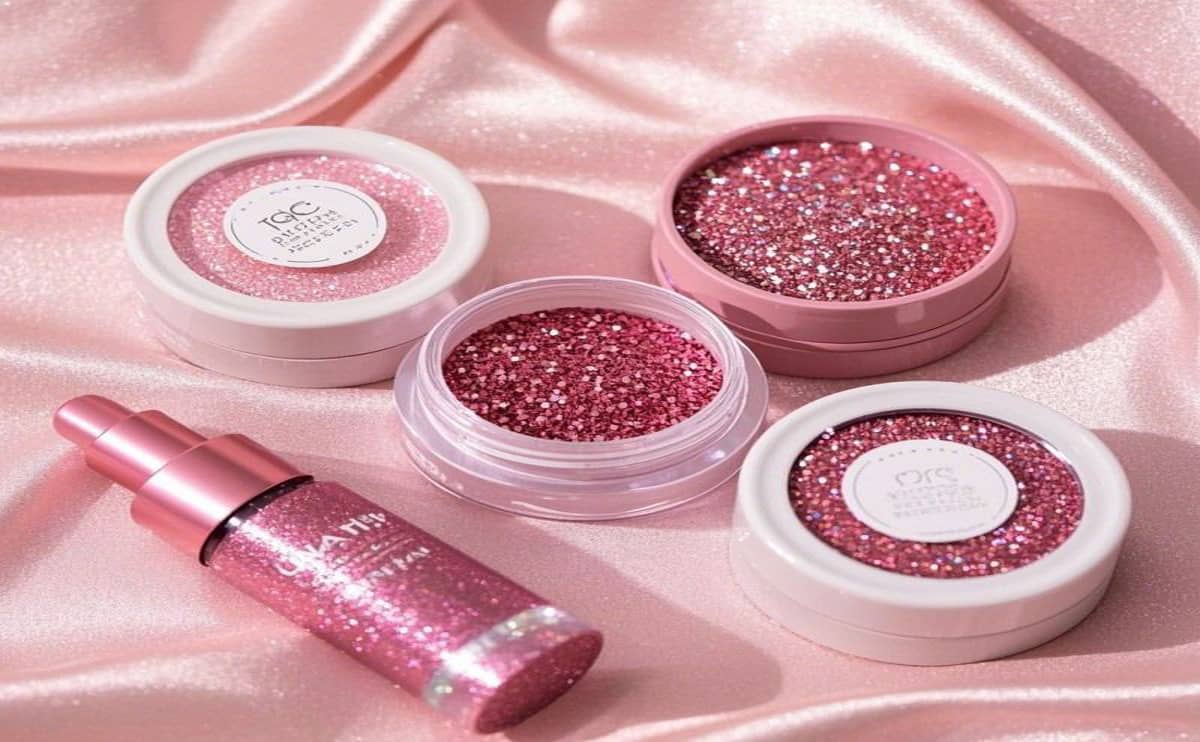How Does Biodegradable Cosmetic Glitter Compare to Traditional Glitter?

As sustainability becomes a priority in the beauty industry, many brands are moving towards eco-friendly alternatives. One such change involves replacing traditional plastic glitter with biodegradable cosmetic glitter. This shift is a response to the growing environmental concerns about microplastics. In this article, we will compare biodegradable glitter with traditional glitter, focusing on their differences, benefits, and environmental impact.
What is Traditional Glitter?
Traditional glitter is usually made from plastic materials such as polyethylene terephthalate (PET) or polyvinyl chloride (PVC). These materials give the glitter its durable, shiny finish, which works well for cosmetics, decorations, and crafts. However, traditional glitter’s key drawback is its environmental impact. Plastic glitter does not break down, and when it washes off in water or ends up in landfills, it contributes to microplastic pollution. Since these tiny glitter particles are too small to be filtered by water treatment plants, they accumulate in oceans, rivers, and lakes, where they harm aquatic life.
What is Biodegradable Cosmetic Glitter?
Biodegradable cosmetic glitter is made from eco-friendly materials like cellulose or polylactic acid (PLA), which are derived from renewable resources such as corn or sugarcane. This type of glitter breaks down naturally, significantly reducing its environmental footprint compared to traditional plastic glitter. Besides being safe for the environment, biodegradable glitter is also non-toxic and safe for skin. Its eco-friendly ingredients make it a great choice for cosmetic products, ensuring that users can enjoy a sparkling look without harming the planet.
Key Differences Between Biodegradable Glitter and Traditional Glitter
🌿 1. Environmental Impact
The most significant difference between biodegradable glitter and traditional glitter lies in their environmental impact. Traditional glitter made from plastic remains in the environment indefinitely, contributing to pollution. On the other hand, biodegradable glitter breaks down over time, reducing the pollution it causes. By choosing biodegradable glitter, consumers and brands can help reduce the presence of microplastics in the environment.
🏆 2. Ingredients and Safety
Traditional glitter contains plastic, which can irritate the skin and cause discomfort when used in cosmetics. It may also contain aluminum or other metals, which can further harm the environment. Biodegradable glitter, however, uses natural, non-toxic ingredients like cellulose or PLA, making it safer for the skin. It provides a gentler option for makeup and body products, especially for those with sensitive skin.
🌟 3. Aesthetic and Performance
Both biodegradable glitter and traditional glitter offer a dazzling effect, but traditional glitter often has a more intense shine due to its plastic composition. The biodegradable glitter may not reflect light as strongly as plastic glitter, but it still provides a beautiful sparkle. Many cosmetic brands find that biodegradable glitter delivers the right amount of shine without compromising performance.
♻️ 4. Durability and Use
Traditional glitter has remarkable durability. Its plastic material ensures that it stays intact, even when exposed to moisture or outdoor conditions. This quality makes it a popular choice for long-lasting decorations or cosmetics. In contrast, biodegradable glitter may break down more quickly than traditional glitter. While this is an advantage for the environment, it can affect its durability for certain applications. However, advancements in biodegradable glitter formulations are improving the product’s longevity, making it suitable for various cosmetic products.
🌍 5. Consumer Trends and Brand Image
With consumers becoming more environmentally conscious, many beauty brands are making the switch to sustainable products. By incorporating biodegradable glitter into their cosmetics lines, these brands show their commitment to sustainability. Biodegradable glitter can help brands attract eco-conscious customers and improve their marketability as environmentally responsible companies.
Benefits of Switching to Biodegradable Cosmetic Glitter
Switching to biodegradable glitter provides several benefits for both brands and consumers:
-
Reduced Environmental Impact: Using biodegradable glitter helps reduce plastic waste and microplastic pollution, aligning with sustainability goals.
-
Health and Safety: Biodegradable glitter is safer for skin and contains natural ingredients that are non-toxic. It is a better option for people with sensitive skin, providing a gentler and safer cosmetic experience.
-
Appeal to Eco-Conscious Consumers: As sustainability becomes a key factor in purchasing decisions, offering biodegradable glitter can help beauty brands attract environmentally aware consumers.
-
Compliance with Regulations: Some regions have started to impose regulations on microplastics in cosmetics. By switching to biodegradable glitter, brands can ensure compliance with these regulations while promoting eco-friendly practices.
Conclusion:
Switching from traditional glitter to biodegradable glitter offers a sustainable solution to the beauty industry’s environmental challenges. While traditional glitter provides durability and a strong reflective shine, its environmental impact cannot be overlooked. Biodegradable glitter offers an eco-friendly alternative that breaks down over time and provides a safe, non-toxic option for cosmetics. For beauty brands aiming to reduce their environmental footprint and meet the demand for sustainable beauty products, incorporating biodegradable glitter is a smart choice. It is an easy yet impactful way to support the planet while delivering the sparkle and shine that customers love.
